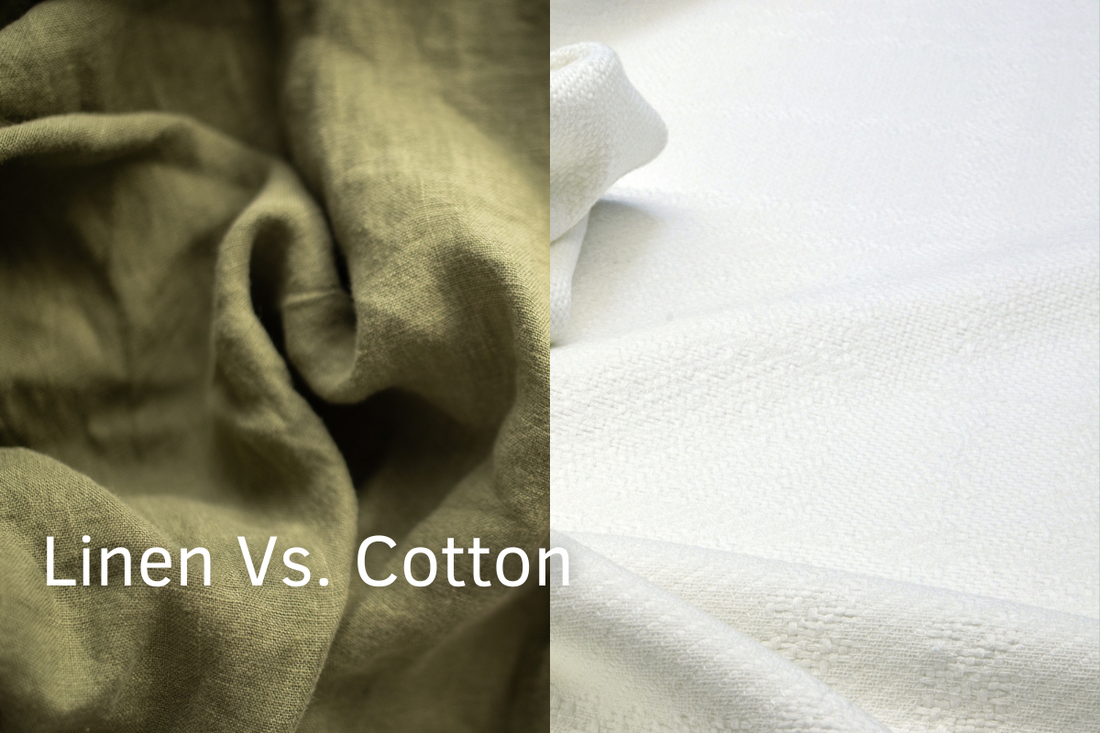
Linen vs. Cotton: Which One Should You Actually Choose?
Share
Let's cut through the noise and talk about two fabrics we all know and probably have in our closets right now - linen and cotton. Both are natural, breathable, and super versatile, but there's been a lot of buzz lately about linen being the more eco-friendly choice. Let's break down the real differences between these two and figure out which one makes more sense for you and the environment.
The Basics: What Are We Working With?
Linen comes from the flax plant and has been around forever - we're talking ancient civilization levels of old. It's light, strong, and has that effortlessly cool look.
Cotton is that everyday hero we all know - it's soft, affordable, and pretty much everywhere.
Both have their strong points, but they're actually quite different when you look closer.
Linen vs. Cotton: Which One Should You Actually Choose?
Let's cut through the noise and talk about two fabrics we all know and probably have in our closets right now - linen and cotton. Both are natural, breathable, and super versatile, but there's been a lot of buzz lately about linen being the more eco-friendly choice. Let's break down the real differences between these two and figure out which one makes more sense for you and the environment.
The Basics: What Are We Working With?
Linen comes from the flax plant and has been around forever - we're talking ancient civilization levels of old. It's light, strong, and has that effortlessly cool look.
Cotton is that everyday hero we all know - it's soft, affordable, and pretty much everywhere.
Both have their strong points, but they're actually quite different when you look closer.
Water Usage: Why Linen Has the Upper Hand
Here's where things get interesting - the amount of water needed to make these fabrics is dramatically different.
Linen (From Flax):
Think of flax as that low-maintenance plant that doesn't need much babysitting. It mostly grows with just rainwater, making it super efficient. To put it in perspective, it needs about six times less water than cotton.
Cotton:
Cotton is basically the water-guzzler of the fabric world. Ready for a mind-blowing fact? It takes about 20,000 liters of water to make enough cotton for just one T-shirt and a pair of jeans. That's a lot of water for just two pieces of clothing.
Why This Matters:
Cotton's thirst for water is causing real problems, especially in places where water is already scarce. It's literally drying up rivers and lakes in some areas. Linen, on the other hand, is much gentler on our water resources.
Durability: The Long Game
Here's where linen really shines - it's built to last.
Linen's Staying Power:
Think of linen as that friend who gets better with age. It actually gets softer and stronger the more you wash it, which is pretty unique. With decent care, linen stuff can last for decades - we're talking about passing it down to your kids kind of durability.
Cotton's Lifespan:
Cotton starts out softer, sure, but it's kind of like that friend who peaks in high school. It tends to wear out faster with washing, and you'll probably need to replace it sooner.
Money Talk:
Yes, linen costs more upfront, but think about it like this: if you buy one linen shirt that lasts 10 years versus three cotton shirts that wear out over the same time, which one's really cheaper?
The Environmental Impact: Linen's Green Credentials
Farming Methods:
Linen (Flax): Flax is basically the dream crop for environmentalists. It grows fast, barely needs any pesticides, and farmers can use every single part of the plant. It even makes the soil better for other crops.
Cotton: Cotton farming is much more intensive. It usually needs lots of chemicals and pesticides, which isn't great for the soil, water, or wildlife.
Energy Use and Carbon Footprint:
Making linen generally needs less energy than cotton. It's less dependent on heavy machinery and industrial processes, which means it leaves a smaller carbon footprint.
Comfort and Everyday Use: The Real-World Test
Breathability and Sweat Management:
Both fabrics let your skin breathe, but linen has a neat trick - it handles sweat better. It can get wet without feeling damp and dries super quickly. Cotton, while comfy, tends to hold onto moisture more, which can get uncomfortable in hot weather.
Care and Maintenance:
Linen starts out a bit rough but gets softer over time. Those wrinkles? They're part of its charm. Cotton is smoother from the start but can get pills and shrink more easily.
So, Which One Should You Choose?
Go for Linen If:
- You're serious about being eco-friendly
- You want clothes that last forever
- You like that effortlessly stylish look
- You don't mind investing more upfront
Stick with Cotton If:
- You're watching your budget
- You prefer super soft fabric from day one
- You don't mind replacing things more often
The Bottom Line
When it comes down to it, linen is the clear winner for sustainability and longevity. Yes, it costs more initially, but it's better for the planet and actually saves money in the long run because it lasts so much longer.
That said, cotton isn't all bad - it's affordable and comfortable, which makes it accessible to more people. But if you can swing it, investing in some linen pieces is a smart move for both your wardrobe and the environment. Think of it as voting with your wallet for a healthier planet.
